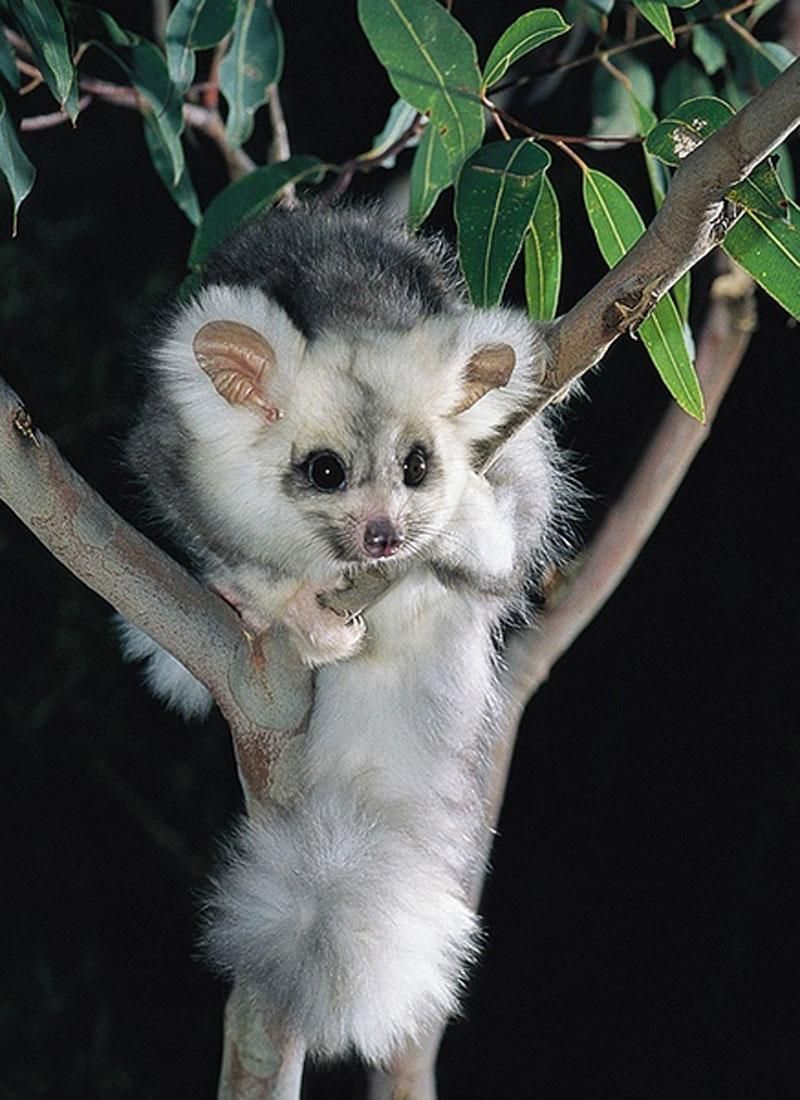Greater glider
(Petauroides volans)

Description
The greater gliders are three species of large gliding marsupials in the genus Petauroides, all of which are found in eastern Australia. Until 2020 they were considered to be one species, Petauroides volans. In 2020 morphological and genetic differences, obtained using diversity arrays technology, showed there were three species subsumed under this one name. The two new species were named Petauroides armillatus and Petauroides minor. These species are not closely related to the Petaurus group of gliding marsupials but instead to the lemur-like ringtail possum, Hemibelideus lemuroides, with which it shares the subfamily Hemibelideinae. The greater gliders are nocturnal and are solitary herbivores feeding almost exclusively on Eucalyptus leaves and buds. Like their relative, the lemur-like ringtail, the southern greater glider is found in two forms: a sooty brown form and a grey-to-white form. The central greater glider is instead silvery brown, while the northern greater glider is brownish-gray. The greater gliders are found in eucalypt forests from Mossman, Queensland, to Daylesford, Victoria. The three species differ in their size, with the northern greater glider only growing to the size of a small ringtail possum, while the southern greater glider grows to the size of a house cat. The central greater glider is intermediate between these two. Greater gliders have a head and body 39 to 43 centimetres (15 to 17 in) long, with the females generally being larger than the males. Their body is covered with a shaggy coat of fur that increases their apparent size, and the tail is long and bushy, ranging from 44 to 53 centimetres (17 to 21 in). The head is short with a pointed muzzle and their large ears are fringed and backed with long fur. Each side of the body bears membranes stretching between the elbow and the ankle that give these animals the ability to perform controlled glides. This is in contrast to other gliding marsupials, such as the sugar glider, that have gliding membranes stretching from the wrists to the ankles. The feet have strongly recurved claws to grip onto bark or other surfaces. There are five toes on each foot. The first toe on the hind foot and the first two toes on the fore foot are opposable. The fur is soft and up to 60 millimetres (2.4 in) long. All three species have cream undersides and primarily differ in the coloration of their pelages.
Taxonomic tree:







